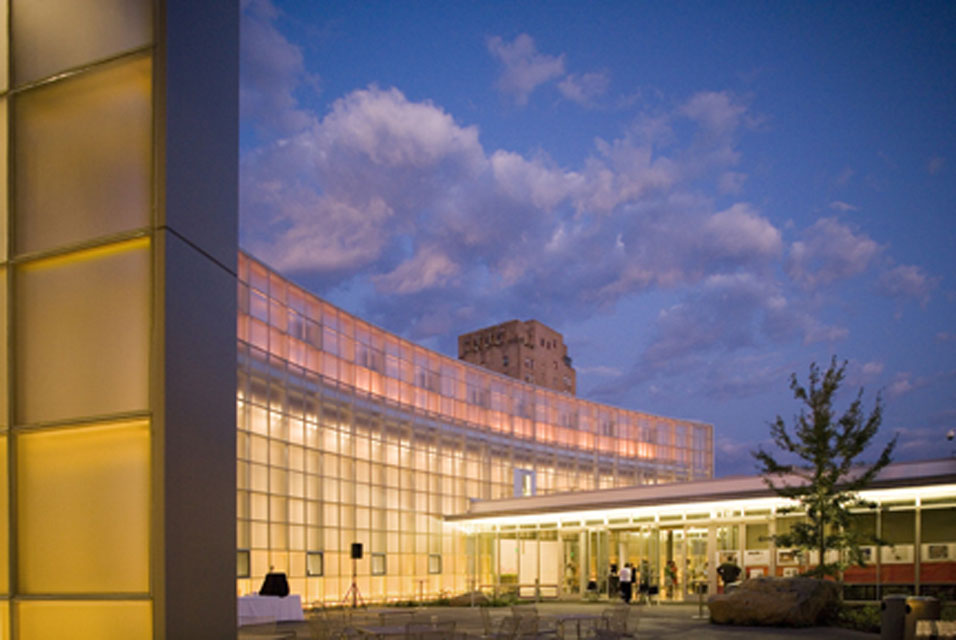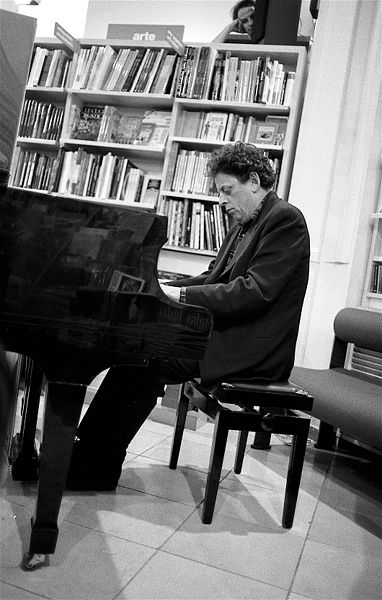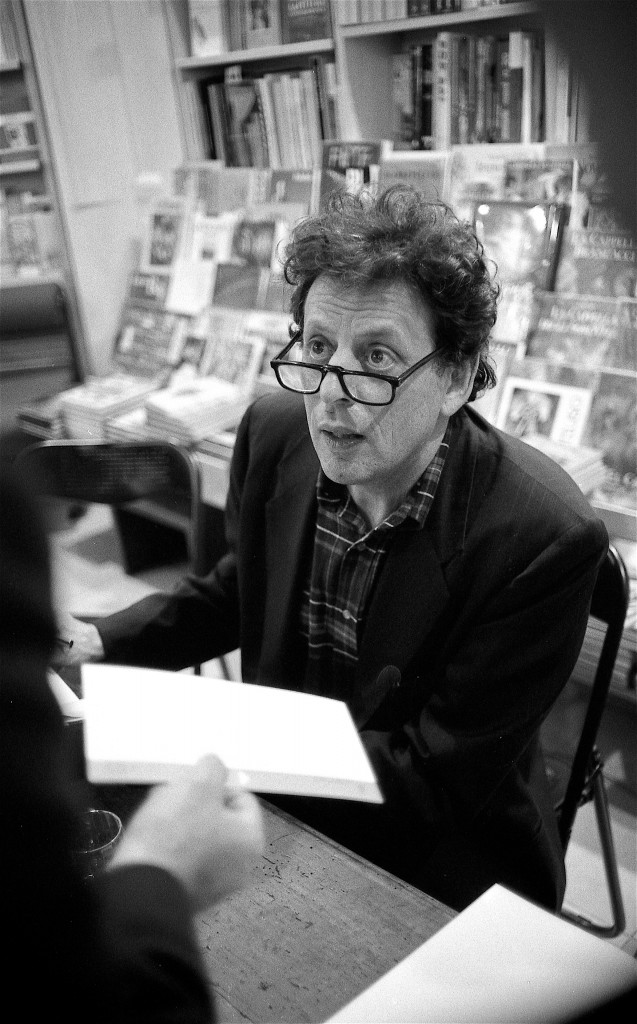
Things have changed in Bellingham, Washington, since I was a kid. Thanks to artdaily.org for this report on Saturday’s grand opening of the Lightcatcher, the showpiece of an $18.3 million addition and refurbishment to the Whatcom Museum that adds 42,000 square feet of gallery, education, storage and public spaces.
The $12.8 million new building’s defining feature is a 36-foot-tall, 180-foot-long curving wall of glass designed to capture natural light, a precious commodity in Whatcom County, which butts up against the Canadian border to the north and the gray marine storms that blow in from Georgia Strait to the west. Designed by Jim Olson of the Seattle firm Olson Sundberg Kundig Allen, the new building becomes the focus of a downtown museum district that also includes the original museum building, in the city’s Victorian-style 1892 former city hall, and a children’s/education center next door in a 1926 former fire hall. The city hall building, which will focus more of its attention on the museum’s historical collections, has been closed for repairs and is expected to reopen in December.
 The design firm says the Lightcatcher’s concept is “that of a museum turned inside out” to make the building as active on the outside as it will be on the inside.” For those who track such things, the Lightcatcher is also Washington state’s first museum building to earn a silver LEEDS environmental-efficiency designation.
The design firm says the Lightcatcher’s concept is “that of a museum turned inside out” to make the building as active on the outside as it will be on the inside.” For those who track such things, the Lightcatcher is also Washington state’s first museum building to earn a silver LEEDS environmental-efficiency designation.
Eighteen million dollars may sound like spare change in the high-striving world of Big Civic Statement new museum buildings, where one mid-major city’s Calatrava rises up to smite its neighbor’s Gehry in a fierce battle of one-upsmanship.
But for a city like Bellingham, which has 75,000 people in a county with a population of 166,000, raising that much for a project like this is a huge achievement. And in a way it shouldn’t be a surprise: The city’s college, Western Washington University, has an outdoor sculpture collection that boasts some major 20th century names, among them Isamu Noguchi, Donald Judd, Robert Maki, Richard Serra, Mark diSuvero and Bruce Nauman.
Still, I confess I’m both surprised and pleased. I grew up in Whatcom County, and Bellingham was the close big city when I was a kid (Seattle and Vancouver, British Columbia were the really big cities, and I got to know both of them, too, but with Bellingham I was intimate). Then, in the mid- to late 1960s, I went to college at Western, and stayed for a couple of years after that as a fledgling journalist.

 It’s the big yearly benefit for the Sitka Center for Art and Ecology, a hands-on arts retreat and workshop center on the Oregon coast, and it always has a generous cooperative feel. Plus, if you play your cards right, you can go home with a good deal on some good art.
It’s the big yearly benefit for the Sitka Center for Art and Ecology, a hands-on arts retreat and workshop center on the Oregon coast, and it always has a generous cooperative feel. Plus, if you play your cards right, you can go home with a good deal on some good art. The new online news and reviews service is an attempt to bring pretty much the whole Portland area music scene under one big umbrella, from classical to hip-hop to jazz and blues. Tom D’Antoni, a longtime music freelance writer and producer/reporter on OPB’s Oregon Art Beat, is editor-in-chief. Nancy Glass is publisher.
The new online news and reviews service is an attempt to bring pretty much the whole Portland area music scene under one big umbrella, from classical to hip-hop to jazz and blues. Tom D’Antoni, a longtime music freelance writer and producer/reporter on OPB’s Oregon Art Beat, is editor-in-chief. Nancy Glass is publisher. It’s the result of a 10-week workshop with older residents in care centers, listening to their stories and helping them set them down. The results are by turn comic, sentimental, regretful, nostalgic, and sometimes harrowing — the way life looks when you’ve traveled a long way down its path. A cast of good professional actors and musicians is interpreting the stories.
It’s the result of a 10-week workshop with older residents in care centers, listening to their stories and helping them set them down. The results are by turn comic, sentimental, regretful, nostalgic, and sometimes harrowing — the way life looks when you’ve traveled a long way down its path. A cast of good professional actors and musicians is interpreting the stories.




 10:10 p.m., this joint is emptying out.
10:10 p.m., this joint is emptying out.

 6:14 p.m. Friday, Nov. 6, Keller Auditorium, in the lobby: One hour and 16 minutes to showtime, the show being the West Coast premiere of Philip Glass’s Orphee, by Portland Opera.
6:14 p.m. Friday, Nov. 6, Keller Auditorium, in the lobby: One hour and 16 minutes to showtime, the show being the West Coast premiere of Philip Glass’s Orphee, by Portland Opera.